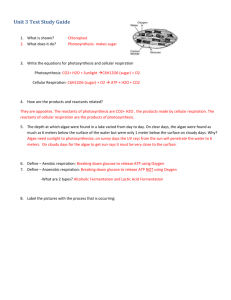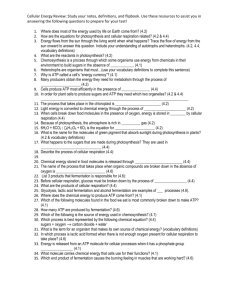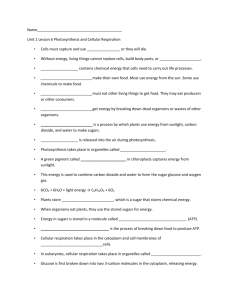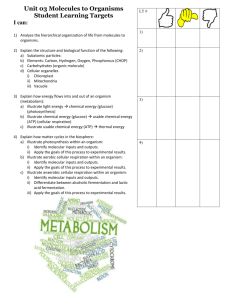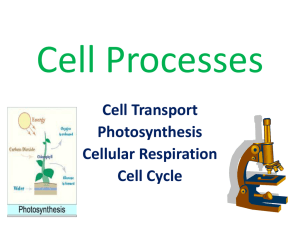Organization of Living Things and Cellular Respiration
advertisement
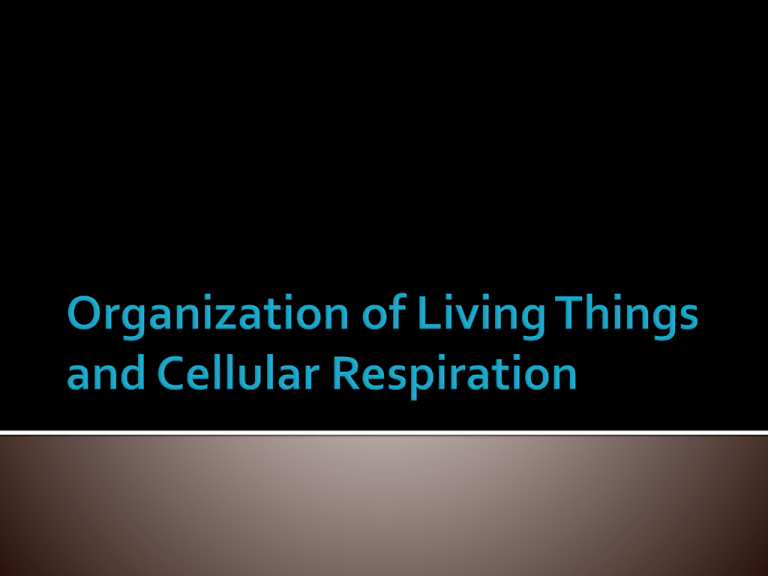
Larger size means there are fewer predators and have a wide variety of prey. Longer life. Specialization of each cell makes multicellular organisms more efficient. Tissue: a group of similar cells that perform a common function. Cells Cells work together to create tissues Tissues Organ: a collection of tissues that carry out a specialized function in the body. Tissues Tissues work together to create organs. Organs Organ System: a group of organs that work together to perform body functions. Organs Organs work together to create Organ Systems. Organ Systems The Organization of Living Things Cell Tissue Organ Organ System Plants get food from photosynthesis. Photosynthesis: the process by which plants, algae, and some bacteria use sunlight, carbon dioxide, and water to make food. There are two ways animal cells get food. Animal Cells get food by… Cellular Respiration Fermentation Cellular Respiration: the process by which cells use oxygen to produce energy from food. Food is broken into carbon dioxide and water and energy is released. Some of the energy is used to form adenosine triphosphate (ATP-remember it was in the organelle powerpoint). ATP supplies energy that fuels cell activities. C₂H₁₂O₆ + 6O₂ 6CO₂ + H₂O + energy (ATP) Cellular Respiration releases carbon dioxide and water which is used by plant cells to make glucose. During photosynthesis, oxygen is released. Photosynthesis makes glucose and oxygen which is used by animal cells to make ATP. Cellular respiration releases carbon dioxide and water. Cellular Respiration Cellular respiration releases carbon dioxide and water which is used by plant cells to make glucose. During photosynthesis, oxygen is released. Light Energy Chloroplast from Plant Cell ATP CO₂ + H₂O Mitochondria from Animal Cell Photosynthesis Photosynthesis makes glucose and oxygen which is C₂H₁₂O₆ + O₂ used in animal cells to make ATP. Cellular respiration releases carbon dioxide and water. Better view of this on page 388 Fermentation: the breakdown of food without the use of oxygen. Example: your muscles burning when you are running. Your muscles can’t get enough oxygen so fermentation produces lactic acid which makes your muscles burn. Example: Yeast in bread. Yeast forms carbon dioxide during fermentation. The bubbles of CO₂ cause the dough to rise and leave small holes in the bread after it is baked.


